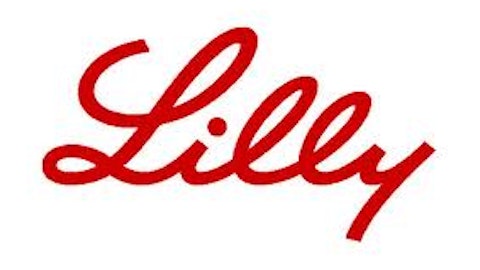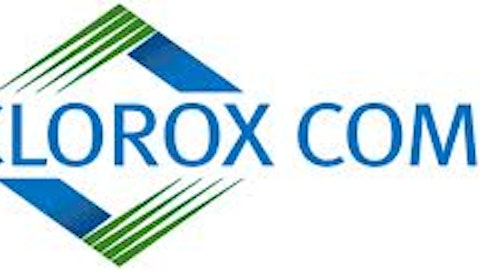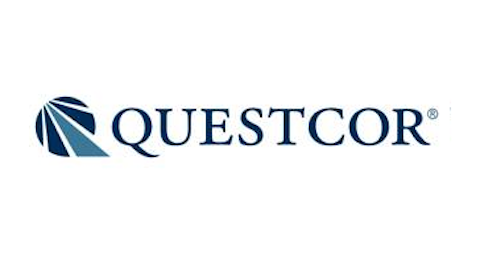
Source: Luke O’Rourke, Flickr.
In cases where it’s minor and/or temporary (e.g., a night or two), over-the-counter medications can often be effective. Sanofi SA (ADR) (NYSE:SNY), for example, owns the rights to Unisom, one of the most commonly used sleep aids, which it acquired when it purchased Chattem for $1.9 billion in 2009. Unisom is nothing more than a sedating antihistamine, but it can have unpleasant side effects such as daytime drowsiness, dry mouth, and dizziness. Therefore, physicians strongly discourage long-term usage of OTC medications — often anything beyond two weeks.
If, instead, we’re focusing on the chronic form of the diseases, then it comes down to whether your problem relates to falling asleep, staying asleep, or both. Chances are that you could be prescribed one of the following:
- Lunesta: Developed by Sepracor, but purchased by Dainippon Sumitomo Pharma Co., Ltd. (OTCMKTS:DNPUY) in 2009, Lunesta offers insomnia suffers help in both getting to sleep and staying asleep. In 2012, Lunesta brought in close to three-quarters of a billion dollars in sales, but it’s set to face heavy generic competition beginning in 2014.
- Ambien: Also developed by Sanofi SA (ADR) (NYSE:SNY) but approved in 1992, Ambien peaked at roughly $2 billion in annual sales per year before going to generic versions some six years ago. But have no fear — a newer generic version released by Ambien, known as zolpidem, is helping pick up where branded Ambien left off. However, it hasn’t been an easy road for zolpidem-based sleep medications, which have been cited for having caused numerous auto accidents and other impairments the following morning. Recently, the FDA required Sanofi SA (ADR) (NYSE:SNY) and other zolpidem-based sleep aids to cut their dosing in half to reduce these next-day lingering effects.
- Sonata: Originally developed by King Pharmaceuticals, Sonata was brought under the Pfizer Inc. (NYSE:PFE) umbrella in 2010, when Pfizer Inc. (NYSE:PFE) acquired King. Like Ambien, Sonata for a time was a very popular sleep aid (in this case it was approved only to help people get to sleep, not necessarily to keep them asleep), but it ran into problems with its highly addictive properties. Today, Sonata is considered a controlled substance because of its addictive qualities, which can lead to abuse or dependence.
Counting sheep
But for each successful sleep aid to make it to insomnia sufferers, it seems there has been double that number of drugs that have failed to be successful.
The now-defunct Somaxon Pharmaceuticals, for example developed Silenor to treat patients who had no trouble getting to sleep but couldn’t stay asleep. With fewer drugs indicated to treat this aspect of insomnia, expectations for the drug were quite high. If I recall correctly, I remember seeing estimates as high as $300 million-plus in sales of the drug for 2013. Through the first nine-months of 2012, Silenor sales totaled just a paltry $7.8 million. Now here’s the real kicker: Somaxon signed on The Procter & Gamble Company (NYSE:PG) , a marketing behemoth, as its licensing partner to promote the drug. But rather than lock The Procter & Gamble Company (NYSE:PG) into a deal whereby it shared some of the risk in exchange for a share of Silenor’s potential, Somaxon practically took on all of the marketing risk and gave The Procter & Gamble Company (NYSE:PG) an easy way to back out of its partnership — which it did, not too long after.
More recently there was Merck & Co., Inc. (NYSE:MRK)‘s suvorexant, which received praise from the FDA’s panel by a vote of 12-to-4 in favor of approval, yet also dealt with concerns about some 11% of patients who exhibited somnolence (a state of near-sleep) during the day. Lower doses of the drug reduced this occurrence to just 7%, but it wasn’t enough to convince the FDA, which rejected the drug on dosing concerns. The overall consensus among the Street is that suvorexant’s approval process could be delayed by one year or more.
The big bad wolf
What the sleep sector really needs is a new drug capable of knocking the socks off Wall Street and insomnia sufferers. I do believe Merck & Co., Inc. (NYSE:MRK)’s suvorexant could be that drug. In late-stage clinical trials at both the higher (40mg) and lower dosage (20mg), suvorexant significantly helped patients gets to sleep faster (anywhere from 25.7 minutes to 33.7 minutes) and stay asleep longer when compared with the placebo.
Given the recent rash of somnolence brought to light by Ambien CR and other zolpidem product users, it’s not a surprise to see the FDA taking the safer approach here and requiring Merck & Co., Inc. (NYSE:MRK) to come back with a lower-dose version of its drug. Peak sales estimates for the drug have fluttered around $700 million, but if it can perform similarly to its 20mg to 40mg dosing at, say, 10mg to 15mg, then I could easily see it hitting $1 billion mark in annual sales. Ultimately, even at half the lowest dose, this drug could help change the lives of chronic insomniacs, and it could be the smartest way for investors to sleep better at night.
The article The 6 Biggest Risk Factors for Insomnia originally appeared on Fool.com is written by Sean Williams.
Fool contributor Sean Williams has no material interest in any companies mentioned in this article. You can follow him on CAPS under the screen name TMFUltraLong, track every pick he makes under the screen name TrackUltraLong, and check him out on Twitter, where he goes by the handle @TMFUltraLong.The Motley Fool recommends Procter & Gamble.
Copyright © 1995 – 2013 The Motley Fool, LLC. All rights reserved. The Motley Fool has a disclosure policy.




